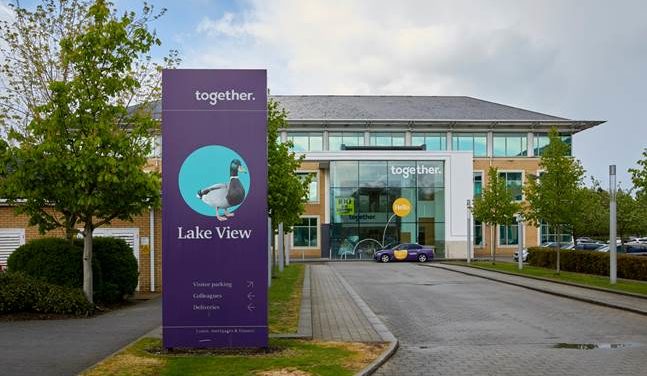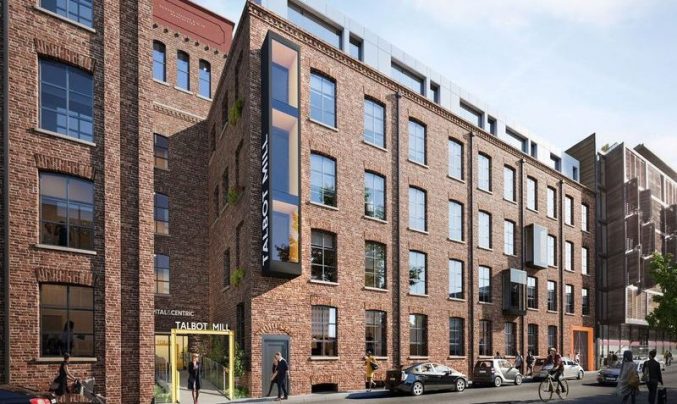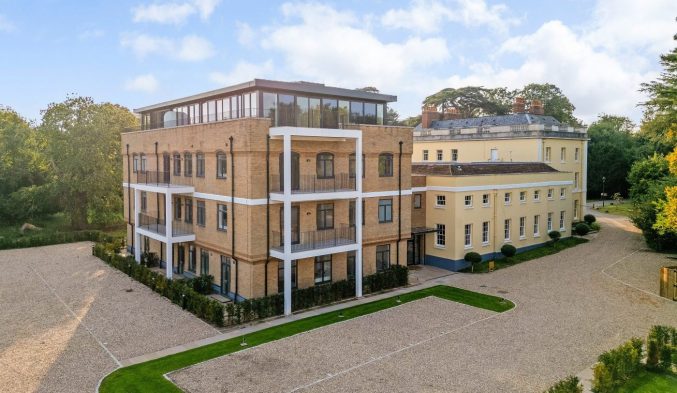Airspace – the latest developments
By Avi Barr
The Government has just introduced new rules allowing blocks of flats to be extended upwards by two storeys to create new homes without the need for planning permission.
The changes come into force on 1 August. With the ability to develop airspace without the need for planning permission, opportunities will arise for many property owners and developers.
This article looks at some of the important elements to be considered when undertaking airspace development.
This article examines several key areas:
- Summary of the recent changes
- What makes airspace developments different?
- Planning
- Construction considerations
- Thinking about the services
- Overview of legal issues
- Checking the lease
- Tenant’s rights of first refusal
- Enfranchisement
Airspace development is not simply the domain of institutional property owners, as freehold owners of multi-occupied properties (whether owners of a building subject to long leases, or indeed residents in blocks of flats with shared ownership) are also increasingly finding ways to exploit value in their properties.
Many developers and block owners will be looking at this new opportunity to convert unused airspace above existing blocks into something more valuable.
What are the recent changes?
The rules state that the right is restricted to buildings of three storeys or more in height and the extended building must not be more than 30 metres in total height.
Meanwhile, the height of the extension cannot be greater than seven metres compared to the highest part of the existing roof, while any new storeys must be individually no more than three metres in height.
The new homes must also be flats, the instrument states, while the right only applies to buildings built after 1 July 1948 and before 5 March 2018 and excludes those within a site of special scientific interest.
Development is only permitted subject to prior approval. Conditions for local authority consideration include: transport and highways impacts; air traffic and defence asset impacts; contamination and flooding risks.
Airspace development; the same but different
The basic requirements for airspace developments are not that dissimilar to any development: the necessary components of land (or in this case airspace over land), services, funding and the actual construction are all there.
However, what makes airspace developments different is the obvious potential design and technical difficulties in building up increased services provision and the actual legalities relating to other occupier or tenant rights, such as access and rights of light, party walls.
All these additional considerations may make construction a little more challenging and funding that little bit more difficult to obtain.
Planning
There has been a marked increase in enthusiasm from local authorities towards airspace developments and now with the change to permitted development rights (contained in the The Town and Country Planning (Permitted Development and Miscellaneous Amendments) (England) (Coronavirus) Regulations 2020), opportunities to develop will be increased.
It is worth emphasising that the new PD rights do not apply to all buildings and a Certificate of Lawfulness will still be required.
For those developments, where planning is required, the main opposition is likely to come from long leaseholders within a block who will be concerned about the impact of the building on their own units.
Construction considerations
Each development will be different but when considering whether an airspace development is feasible an obvious first step is a comprehensive assessment of the suitability of the building to be built upon.
The loading capacity of the existing building designated to support the proposed development is the most important consideration when determining the development’s feasibility.
It is unlikely the original structure will have been built with a loading capacity for any significant increase and the building’s ultimate capacity to take additional loadings will depend upon the actual type of the structure.
An appraisal will also need to take into account the structural capability of the building but also an assessment of access requirements for the build, fire protection (particularly considering any cladding issues in light of the Grenfell tragedy), maintenance, acoustics, provision of services (including internet sustainable technology) and possible construction methods.
Pre-made, modular structures that are built off-site and installed almost fully formed are a popular construction method for airspace developments, reducing the need for on-site labour as prefabricated units can be constructed virtually entirely off-site before being lifted on-site.
Access routes for cranes to deliver the units and crane them on top of the building are therefore fundamental to secure.
Not every roof works financially. The kind of construction required is costly and as a result air space development is so far mainly taking place where values are high and profits can be made.
The engineering solution arrived at to accommodate the additional structure will be key to the success of the whole project.
Services
Although the existing building will have the benefit of services and infrastructure, it is vital to consider the actual capacity requirements needed for the increased number of units in the building once it is developed.
Capacity checks will therefore be required at an early planning stage to assess the impact of the proposed development and develop a workable solution with each service provider.
This may involve separate service facilities or an extension to those existing. If it is possible to extend the use of existing services (in particular for foul water drainage systems) this will lessen the cost but developers will need to be careful not to exceed the capacity for any of the services for the building.
Designing alternative layouts and connections into existing service routes and layouts should be carefully considered as new systems and locations add further complexities, not limited to the siting of such systems potentially outside the building and potentially outside the land title.
As I mention below, many blocks have plant and service equipment including lift equipment sited in roof voids and on the roof itself.
All of this infrastructure will, as a result of any potential build, need to be relocated or re-routed elsewhere.
Although these are all considerations applicable to all developments, often the design requirements and practicalities are more challenging in the case of airspace development.
Legal issues and practical solutions
Not surprisingly, a roof top development scheme may well be met by resistance from resident tenants and neighbouring property owners who will have concerns as to the noise and disruption caused and possible effect on the enjoyment of their property, availability of amenities such as car parking, and the effect on value.
One of the sweeteners could be the offer of a newly refurbished building exterior and communal areas including lifts and staircases and of course a new roof – all undertaken outside of the service charge regime.
Whatever arrangement is arrived at needs to be documented with the party responsible for the maintenance and repair of communal areas, which could be the freeholder, management company or the tenants themselves.
Offering to extend the leases for the existing tenants and even a profit share with the leaseholders are other incentives to leaseholders which a freeholder or developer may be able to offer.
Whatever the deal there are legal constraints which need to be understood and correctly dealt with. In the case of neighbours, as with any development, restrictive covenants, rights of light and party wall legislation need to be taken into account and managed at an early stage.
Checking the leases
The starting point is that from a leaseholder’s perspective, the building owner has a right to develop its building unless there are very specific restrictions on development (it is worth having a look at the judgement of judgment of Bernard Livesey QC in Hannon v 169 Queen’s Gate Ltd which involved a challenge to an airspace development).
Similarly, a tenant’s right to quiet enjoyment cannot, so long as the development is undertaken in a considerate manner, be used as an argument to prevent the development taking place (Goldmile Properties Ltd v Lechouritis [2003] was a Court of Appeal case where a tenant ran the quiet enjoyment argument and lost).
Developers would be wise to consider hours of working, the length of time the development takes and even the location of scaffolding to ensure the leaseholders have no opportunity to challenge an airspace development.
It is though important to check the lease carefully as it may create further points to consider, the first being who owns the roof space and air above it?
Although a fairly basic point, the fact that the roof space had already been demised to tenants in a building enabled them to stop an airspace development in a 2014 case, H Waites Ltd v Hambledon Court Ltd.
Consideration will also need to be given to any rights in favour of the leaseholders (easements) in the leases as these rights can prevent development. Look out for an express or implied right over the roof.
An added factor to consider is that the majority of services are found in roof voids together with things like air conditioning, lift plant, ventilation, chimney shafts and flues, smoke detection systems, aerials and satellite dishes etc, all of which will, as a result of any potential build, need to be relocated or re-routed elsewhere.
Again, the developer will need to be clear on whether it controls those areas and that the lease provides sufficient flexibility for relocating equipment.
Tenants’ rights of first refusal
It is really important that if the freeholder is considering transferring the airspace by way of a lease or a sale of the freehold to another party, that it properly considers whether the transfer is a relevant disposal within Section 4 of the Landlord and Tenant Act 1987.
If it is a relevant disposal, the leaseholders will have a right of first refusal meaning that any proposed lease (or opportunity to buy the freehold) must first be offered to the requisite majority of qualifying tenants (generally long leaseholders) on the same terms and at the same price as it was to be offered to the developer.
A failure to comply with the Act is not only a criminal offence but the anti-avoidance provisions mean that if the landlord fails to comply, the leaseholders can compulsorily acquire the lease from the purchaser direct for the price it paid.
Where the Act applies the qualifying leaseholders need to be given a minimum of two months’ notice prior to any sale which can seriously affect the commercial viability of the development.
There are ways of working around the legislation and legal advice can help identify a correct approach but this is certainly not an issue to ignore.
Collective enfranchisement
Whereas the rights of first refusal are triggered on a sale, enfranchisement under the Leasehold Reform, Housing and Urban Development Act 1993 effectively allows the leaseholders to force through a sale at any time.
Under the legislation they are required to purchase the whole of the building and the cost normally makes it an unattractive proposition for leaseholders.
The legislation states that their entitlement is to a purchase of an ‘interest reasonably necessary for the proper management or maintenance of those common parts’ and this entitlement can therefore often catch roof space.
The risk to the developer comes if the tenants are able to argue that the value of the rooftop space is as amenity space rather than potential development space (it will be interesting to see if the relaxation to PD which we discussed earlier will benefit the freeholders in this scenario as the freeholder will be able to argue that the space should be valued based on its development value).
Enfranchisement is another important issue to consider at an early stage to mitigate any risk of losing the block at a price below its value to a developer.
Avi Barr is a partner and Head of BBS Law’s London Office. Avi acts for a number of airspace developers and lenders and is happy to discuss anything within this article.
Email: abarr@bbslaw.co.uk / Direct Dial: 0204 505 8081.











You must be logged in to post a comment.